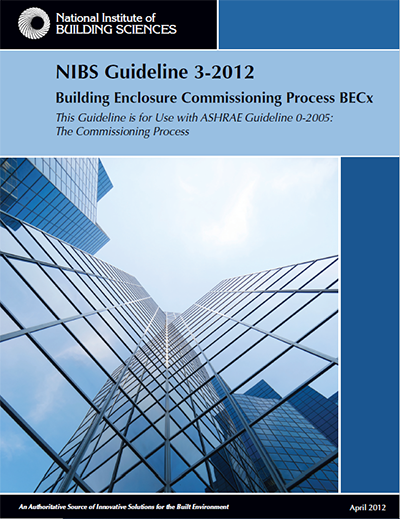NIBS Guideline 3-2012 Building Enclosure Commissioning Process BECx
The process of commissioning the enclosure follows a similar process as other building systems. However, commissioning the enclosure differs from commissioning other building systems in the focus on materials and assemblies. The enclosure is designed and field assembled from numerous materials with varying properties. These materials are manufactured by different companies for a specific function, assembled mostly on site one piece at a time by many different tradespeople, working for several different contractors with often minimal coordination. The work is performed in all possible weather conditions with the intention of meeting very well-defined performance criteria. The performance of the enclosure cannot be verified until the entire building is completely enclosed. At this time it is not possible to tune or dial in the performance. To access a nonperforming subsystem or assembly might be very expensive. Thus, the most reliable means to achieve performance targets during construction is to assure that an expert with technical knowledge of the design and installation of the systems being proposed for the building is integrated into the design process and to visually observe the installation of a statistical sampling of the work. Verification testing should be performed throughout the installation of the enclosure subsystems and components.
GL03 describes a process that provides the flexibility for an owner to incorporate building enclosure commissioning into their project. The Building Enclosure Commissioning (BECx) process is utilized to validate that the performance of materials, components, assemblies, systems and design achieve the objectives and requirements of the owner as outlined in the contract documents. The most effective Commissioning Process ideally begins at project inception (during the Pre-Design Phase) and continues for the life of the facility (through the Occupancy and Operations Phase).
Details
Pages: 337
File Size: 4.2 MB
Links





